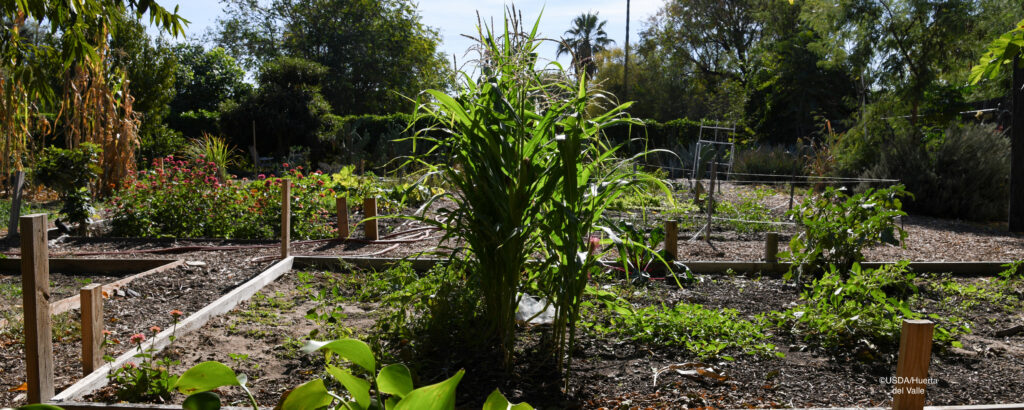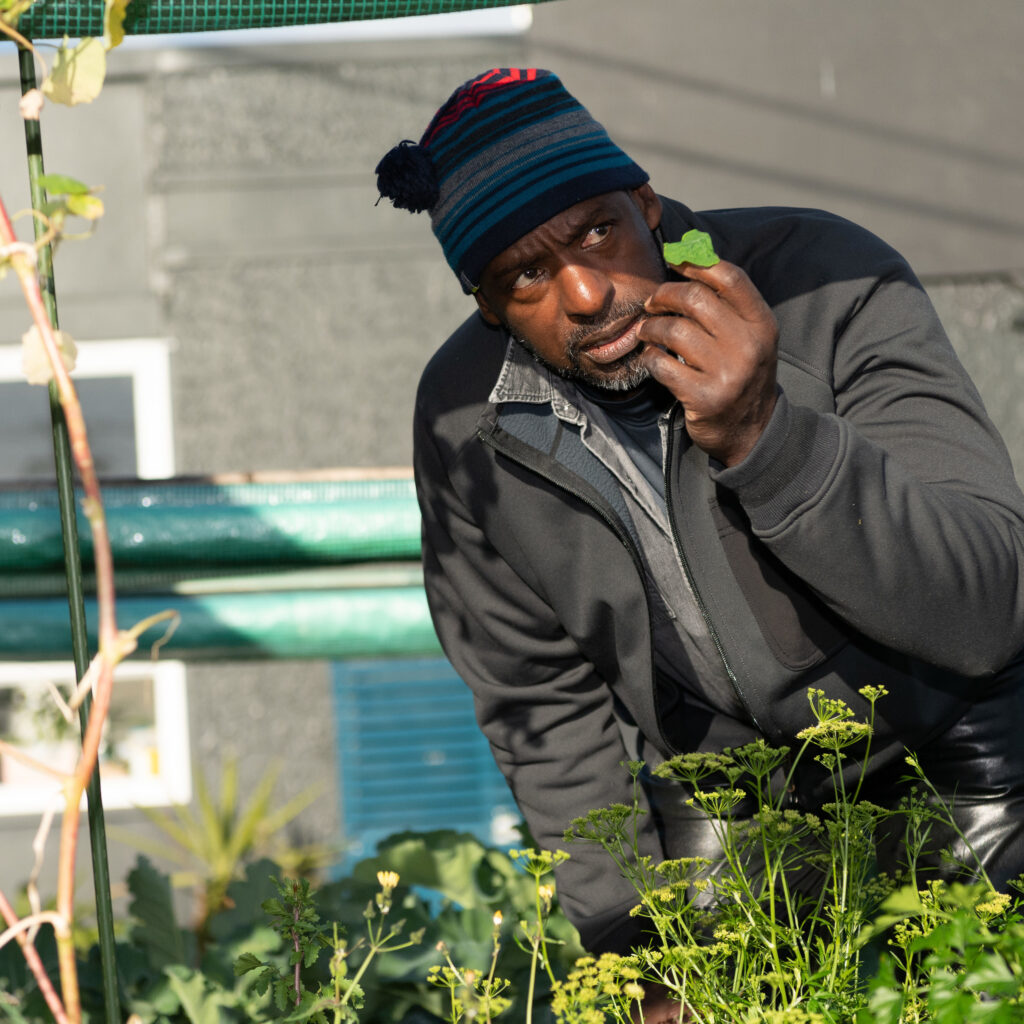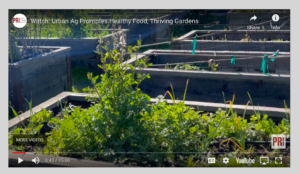Greening the ‘food desert’ by farming vacant urban land
Edward Ring | October 20, 2023
When it comes to food, America’s cities enjoy precarious abundance. We take for granted the remarkable system that allows us close proximity to chilled and gleaming shelves, loaded with apricots from Spain, avocados from Mexico, cheese from France, fish that was originally farmed and frozen somewhere in China, and pretty much any food we can imagine, from anywhere in the world. Americans savor a cornucopia of plenty that’s unprecedented in history.
While California is – by massive margins – a net food exporter, even within the state a gigantic distribution machine is required. Just feeding the 7 million residents of the San Francisco Bay Area requires transporting up to 3 million tons of food per day.
For all its well-oiled, atomized and market-driven efficiency, the machine isn’t perfect. If the geography of food availability were viewed as a biosphere, most of America’s cities would be lush forests. But in a phenomenon almost perfectly correlated with income, huge swaths of the urban landscape could be characterized as a food desert – defined as any “area with no ready access to a store with fresh and nutritious food options within one mile.”
An estimated 23-million people live in food deserts, and about half of these food deserts are in the heart of America’s biggest cities.
It doesn’t take a lot of imagination to determine the consequences of this desertification. Low-income households can’t afford fresh organic fruits and vegetables, or grass-fed beef and free-range antibiotic-free chicken. Often working two jobs and raising children in single-parent households, these residents don’t have enough money to buy healthy food and also don’t have the time to travel across town to the nearest supermarket that may be several miles away. A healthy choice is not an option.
Instead, they walk to the corner store, where in between the racks of cheap liquor and box wine they can pick up canned foods with a variety of ominous-sounding ingredients. Or, worse yet, food-desert dwellers rely upon what we affectionately refer to as “fast food.” Some people call it “junk food.” Both terms are accurate. But boy does it taste good. And it’s relatively cheap.
Hence the recent federal emphasis on nutritional education. According to the National Institute of Health, “government programs and community interventions have shown promise through creating supermarkets, farmers’ markets, and community gardens, but health literacy and behavior modification related to meal choices are just as essential.”
We’re also seeing local programs that attempt to address this issue. As The Orange County Register explained, “some food banks deliver to patients a food box with accompanying recipes and offers nutrition workshops and cooking classes.” The newspaper opposes government mandates requiring insurers to provide these food prescriptions, but noted that voluntary efforts have been promising. Despite efforts spanning decades, not all inner-city areas have such programs in place.
Even if there are enlightened consumers who live in a food swamp, fortified with sufficient willpower to consistently reject sweets, grease and problematic chemical additives, can they afford to eat the good stuff? Maybe. Frozen food, which will keep indefinitely and can often include minimally processed ingredients, is surprisingly affordable. Target, for example, sells several relatively healthy frozen entrees. It offers “carbon neutral” Butternut Squash and Sage Ravioli, 310 calories, for $4.29, and pesto Tortellini “made with organic wheat and basil,” 530 calories, for $5.89.
Even these relatively healthy alternatives are getting harder to come by. In September, Target announced the closure of nine locations in New York, San Francisco, Seattle and Portland, citing theft, and saying “its business had been hurt and the safety of employees and customers was at risk.” If the neighborhood around a large retailer is mobbed with homeless encampments and if stores have to deal with terrifying smash-and-grab robberies, customers will stay away and employees will quit.
Another way to deliver healthy food in America’s inner cities is to grow it on site. In South Central Los Angeles, a self-described rebel by the name of Ron Finley, dubbed the “Gangster Gardener,” has transformed vacant lots in his neighborhood into community gardens. Finley, and the beneficiaries of his efforts, no longer have to “drive 45 minutes just to get a fresh tomato.”


In Oakland, Miguel Altieri, an Agro-ecology professor at UC Berkeley, has analyzed the potential in that city to green its food desert through urban farming. He determined that “Oakland has 1,200 acres of undeveloped open space – mostly public parcels of arable land – which, if used for urban agriculture, could produce 5% to 10% of the city’s vegetable needs.” He argues that the yield could increase if urban farmers “were trained to use well-tested methods that are widely applied in Cuba to cultivate diverse vegetables, roots, tubers and herbs in relatively small spaces.”
Around the United States, similar research and projects are transforming vacant urban land into farms. A 2011 study of urban farming potential in Cleveland found that if 80% of every vacant lot were converted to agricultural use, it would “generate between 22% and 48% of Cleveland’s demand for fresh produce (vegetables and fruits) depending on the vegetable production practice used (conventional gardening, intensive gardening or hydroponics), 25% of both poultry and shell eggs.”
There’s plenty of places where this could work. Consider suburban Detroit, a city where in just a few decades the population has dropped from nearly 2 million to less than 700,000 – a city where decaying roads now bend past groves of cottonwood, oak and silver maple, where deer and jackrabbits now forage in tall grass. Until you pass a burned out ruin of a home, not yet removed, obscured by greenery, it is difficult to imagine that these neighborhoods once were filled with homes, set 35 feet apart and carpeting the land for mile after mile. People joke that Detroit now is experiencing “rural sprawl.”
When considering the sustainability options for inner cities that confront what has been referred to as an economic doom loop, as they are hollowed out by COVID, crime and remote work, urban agriculture is a fascinating opportunity. If urban gardens grow on vacant land in cities that are restructuring economically and decentralizing geographically, greening the food desert is an apt metaphor, but it also is a welcome aesthetic reality. With the potential for indoor agriculture to utilize urban structures that are no longer viable as commercial office space, it is possible that urban food deserts can indeed turn green.
Edward Ring is a co-founder of the California Policy Center and the author of “The Abundance Choice: Our Fight for More Water in California.”


